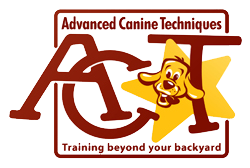If you don’t have any symptoms of COVID-19, you can continue to interact with your pet normally. We recommend washing your hands frequently; Before and after petting your dog and cleaning up after your dog. Make sure to clean your pet’s food and water bowls daily and wash their bedding and toys weekly. This also includes collars, leashes and harnesses. Try to brush/groom your dog daily/weekly. Don’t let anyone pet your dog and wipe them down after any interactions with other dogs. Try to keep your dog on a routine and make sure they get plenty of rest and quiet time during the day.
If you do get sick, you want to have some type of emergency plan in place. Make sure you have someone in place who can care for your pet (family, neighbor, pet sitter). Keep extra food and medications on hand. We recommend at least two weeks of supplies. Keep a copy of their vaccination records handy in case you need to board them. Make sure the person you choose is trustworthy, bonded and reliable. A professional is often a better choice than a neighbor since they have good dog experience and can let you know if they have any concerns about the health and safety of your pet.
On the bright side, this is a perfect time to take your dogs for a walk and teach them that people can be ignored. Don’t let people pet your dog in public right now. The more you take them out (even to the park away from people) you can work on teaching your dog to ignore people and other dogs. This works great for puppies right now so you will be the most important person to that puppy. Take some yummy treats and reward when they ignore dogs, people and squirrels.
Take advantage of this quarantine to work on commands, behaviors and tricks with your dogs. Learn a new skill, practice something you watched on face-book or you-tube and then share it with friends and family. Join challenges that are presented (for example – I am offering a 30- tricks in 30-days challenge for the month of April). Video yourself working with your dog. The best way to work on your body language is to video tape yourself working with your dog and then analyze it. Watch when your dog breaks, watch when you stand up, bend over and move your hand or arm. You would be amazed at how quickly dogs respond to the slightest movement.
Lastly, take these precautions and recommendations seriously. Stay away from dog parks, inviting friends and family over and follow the guidelines set forth by the CDC. Your main objective is to keep yourself and your dog safe!

